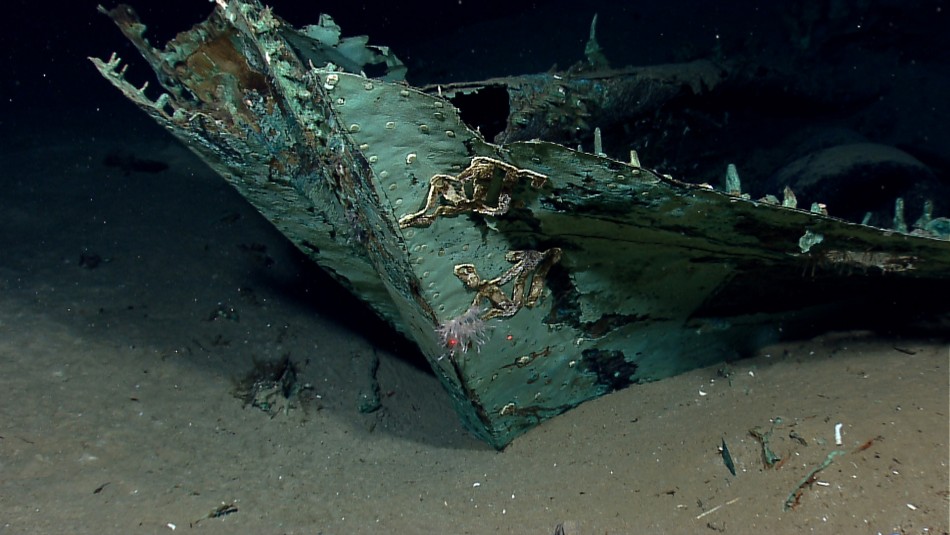200-Year-Old Shipwreck Discovered in ‘Unexplored’ Gulf of Mexico [PHOTOS]
Scientists at the National Oceanic and Atmospheric Administration (NOAA) and the Department of Interior's Bureau of Ocean Energy Management (BOEM) have found the wreck site of a ship believed to have sunk about 200 years ago, in the Gulf of Mexico.
The scientists stumbled upon a wooden-hulled vessel during a recent NOAA-funded 56-day expedition, while diving in unknown or lesser-known areas in the west of Gulf of Mexico. The expedition that ended on 29 April focused on measuring the rate at which gas rose from natural seeps on the seabed, as well as investigating potential shipwreck sites.
"We explored four shipwrecks during this expedition and I believe this wreck was by far the most interesting and historic. The site is nearly 200 miles off the Gulf coast in over 4,000 feet of water in a relatively unexplored area," Frank Cantelas, a maritime archaeologist with the NOAA's Office of Ocean Exploration and Research said.
Scientists aboard the NOAA ship Okeanos Explorer, the vessel used in the expedition, used underwater robots and high definition cameras to reveal the remains of the anchor and navigational instruments-laden ship. The shipwreck also had a variety of artifacts such as glass bottles, ceramic plates (similar to those popular between 1800 and 1830), bowls, wine bottles, medicine and all sorts of food storage bottles, some still sealed with content inside. The artifacts inside the ship's hull relate either to daily life on board or to the ship's cargo, according to statements released by the NOAA and the BOEM.
Scientists also said most of the wood used in the construction of the ship had fallen to pieces but the oxidized copper sheathing of the ship remained intact.
"Copper that sheathed the hull beneath the waterline as a protection against marine-boring organisms remains, leaving a copper shell retaining the form of the ship. The copper has turned green due to oxidation and chemical processes over more than a century on the seafloor," the statement read.
During the expedition, the scientists also came across areas rich in marine life and biodiversity in and around the shipwreck.






© Copyright IBTimes 2025. All rights reserved.





















